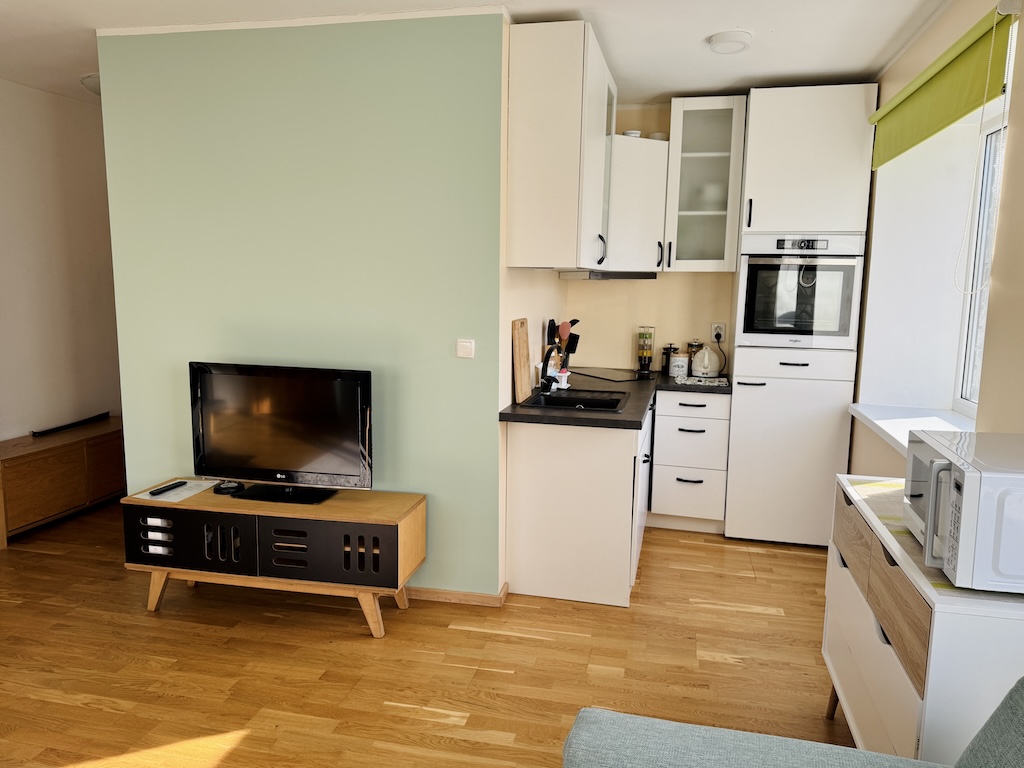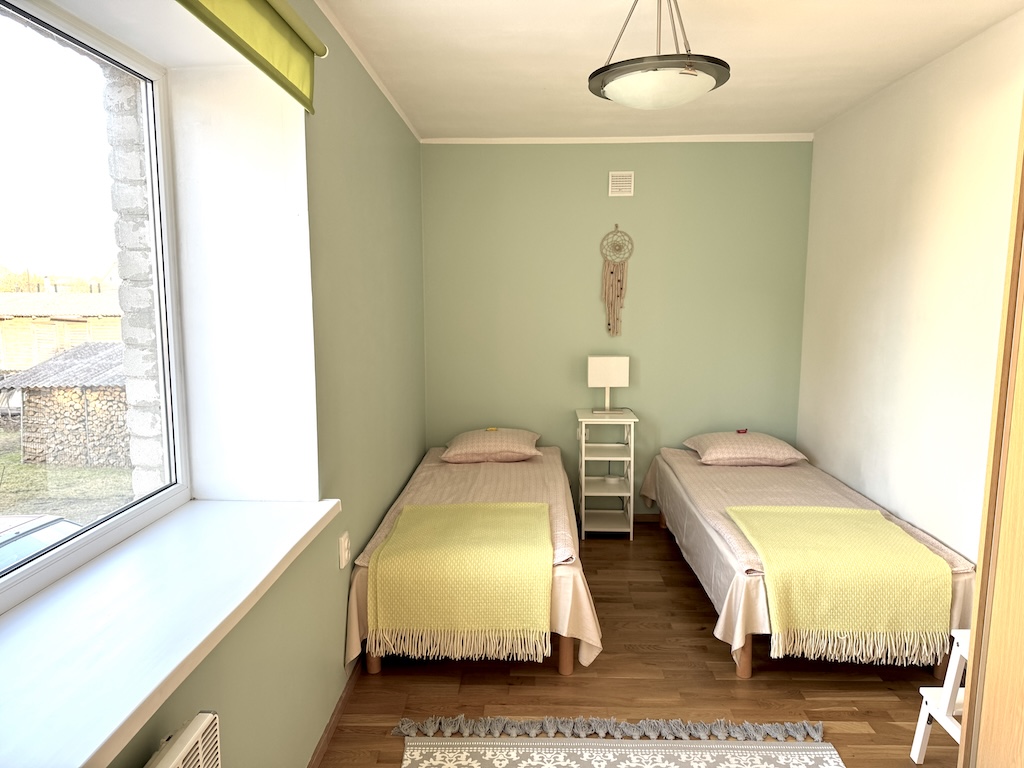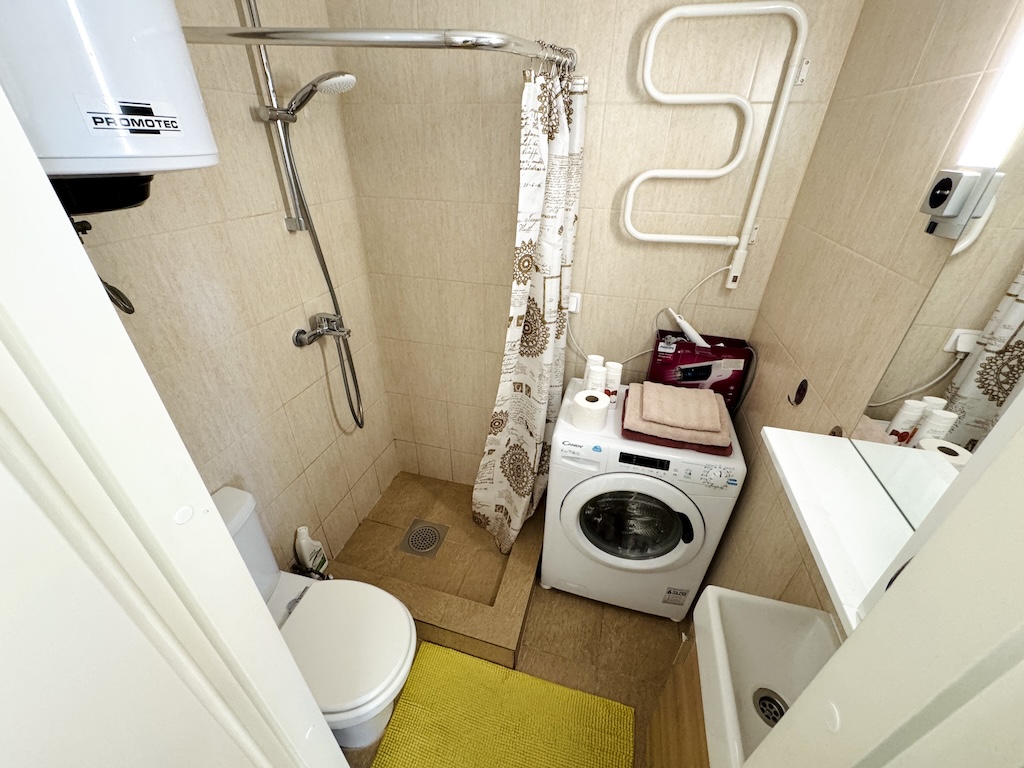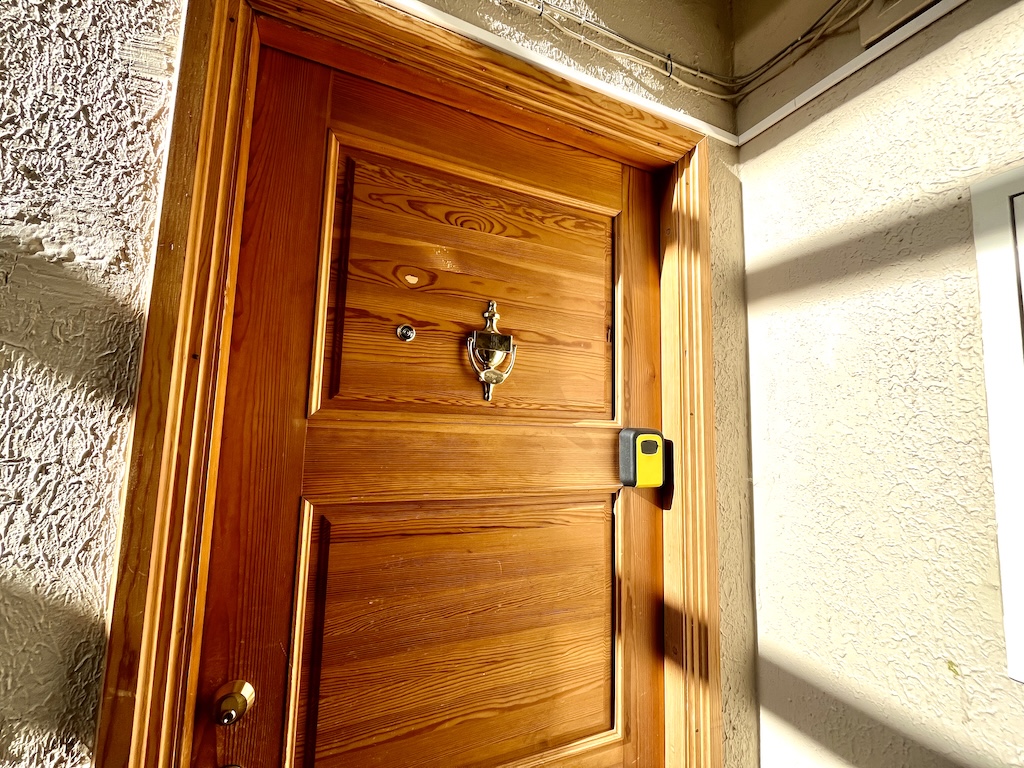Apartment at Rootsi Street
What awaits you?
The apartment has two rooms—a bedroom and a kitchen-living room. Additionally, there is a WC-shower room and a hallway. The kitchen is fully equipped, allowing you to cook whatever you desire. It includes a stove, oven, kettle, fridge, coffee machine, and toaster. We also provide coffee, tea, sugar, and some spices for your convenience.
Magamistoas on kaks kitsast 90 cm voodit. Lisaks saab magamistuppa mahutada lisavoodi või laste reisivoodi. Korter mahutab maksimaalselt kolm inimest.
The entire apartment has Wi-Fi, and the TV features ElisaTV.








Send a booking request
Fill out the form below to check availability and receive a personalized price offer for your desired dates. We’ll reply within 24 hours. If you wish to come today, please call +372 53 966 787.
Summer season (June–August)
3 people €75/night
2 people €65/night
1 person €55/night
Low season (September-May)
3 people €55/night
2 people €45/night
1 person €35/night
Guest feedback




Location
The apartment is located on Roosti Street, a quiet street in the city center.
Interesting fact:
When you walk from Rootsi Street to Tallinna Street, directly in front of you is a stone building richly adorned with fine dolomite work, characteristic of Saaremaa, whose historical value far exceeds its modest architecture. Completed in 1862, the building was purchased by the Kuressaare Estonian Society in 1911, which became a carrier of Estonian culture and identity in the predominantly German-speaking town. The community center hosted choirs and theater groups, various educational courses were held, and a cinema was opened in 1923. From the KES theater group, a professional Kuressaare Theater emerged by 1935, which occupied the building until its closure in 1951. Subsequently, it housed the district's cultural center until 1967, which also included the Saaremaa People's Theatre, established in 1963. After extensive reconstruction, the once grand cultural temple became the home of the Kuressaare City Theater in 1999, where it remains to this day.
